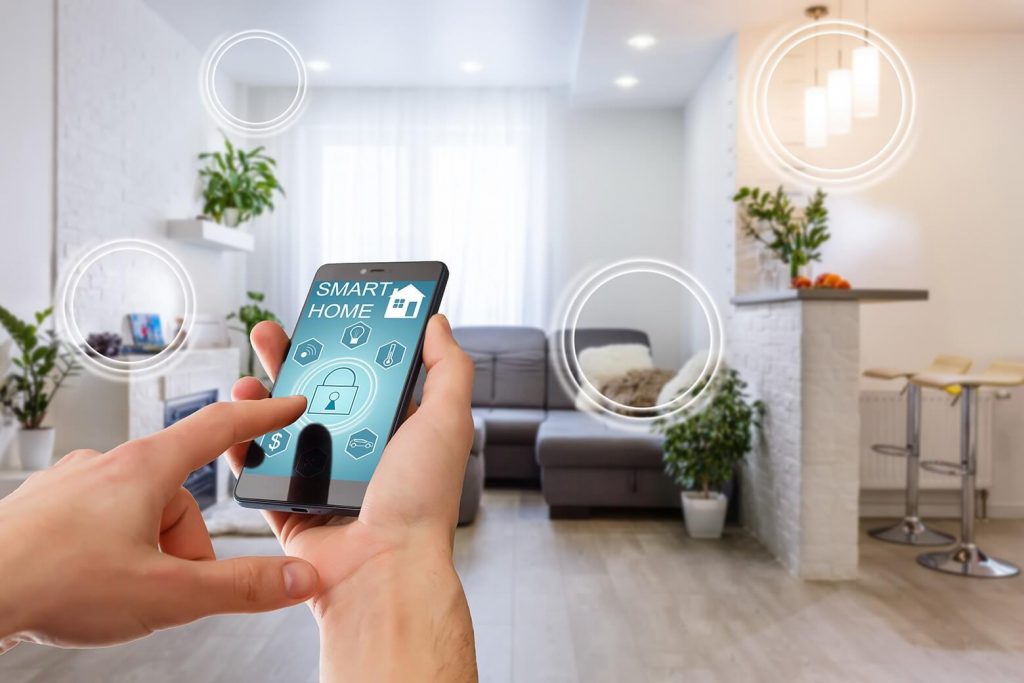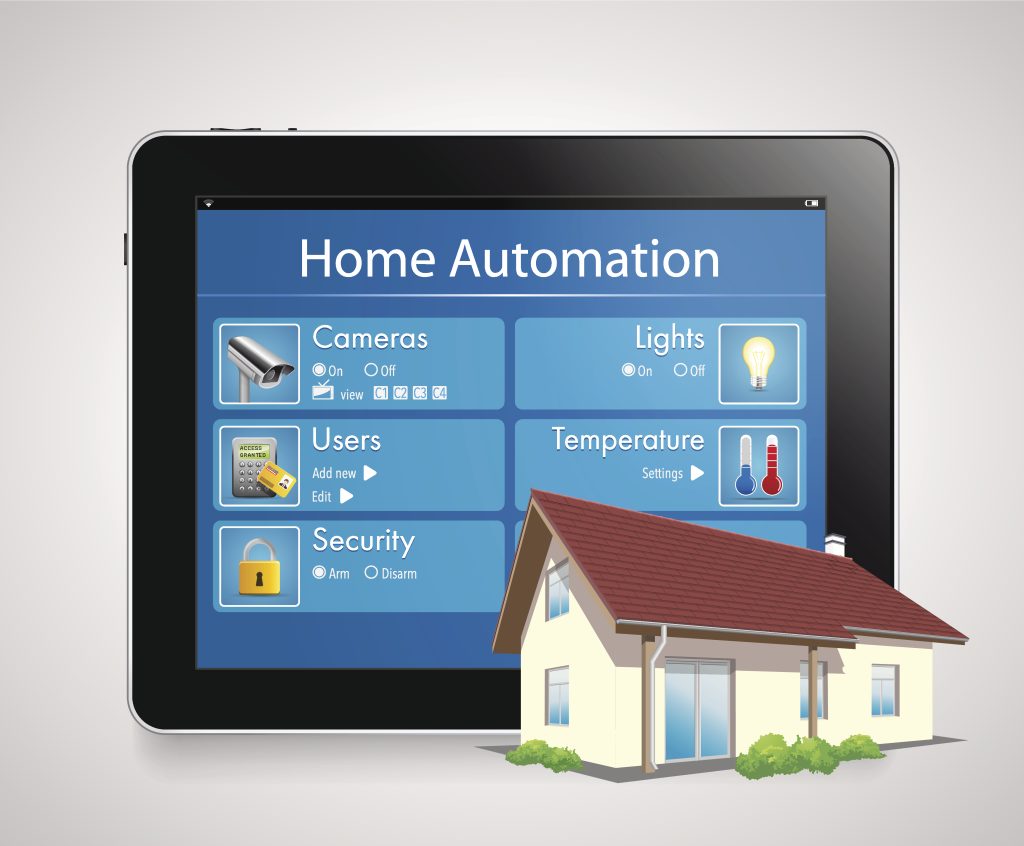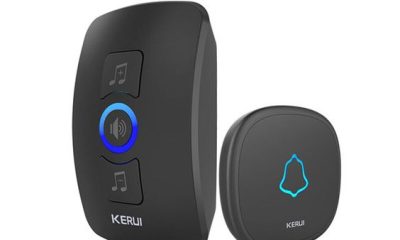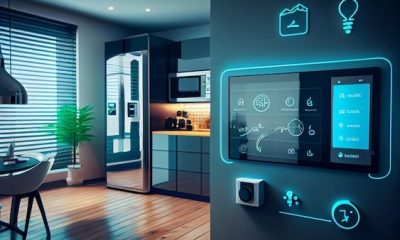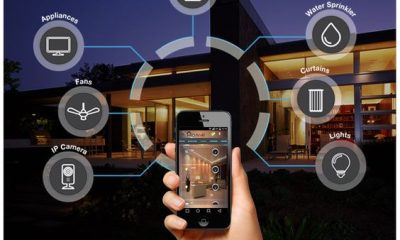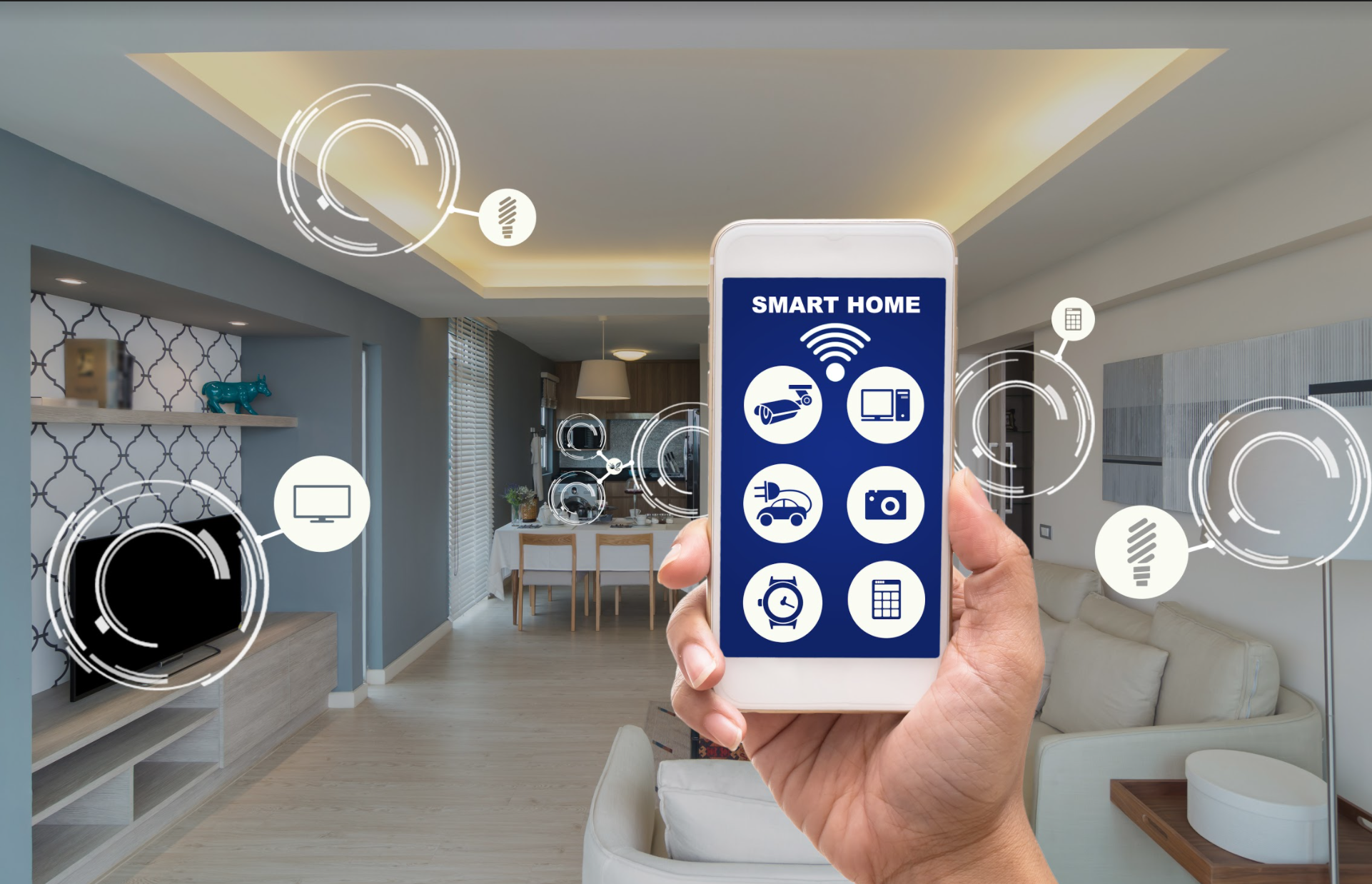Popular
Wireless Home Automation: One Device at a Time, Simplifying Life

Wireless Home Automation: One Device at a Time, Simplifying Life
Introduction
The concept of a smart home has evolved from science fiction to a commonplace reality in today’s fast-paced world where technology is developing at a breakneck pace. Here comes wireless home automation, a ground-breaking invention that has the potential to revolutionize how we interact with our homes. We’ll go into the realm of wireless home automation in this post, looking at its definition, advantages, and how it’s transforming contemporary living.
Home automation’s progression
Until recently, the idea of a fully automated home was only a science fiction ideal reflected in futuristic films and books. The reliance on wired systems caused many of the early attempts at home automation to have limitations. Although ground-breaking at the time, these systems were difficult to deploy and lacked the adaptability needed to meet changing needs.
The industry set out to create wireless home automation technology after realizing the need for a more adaptable and user-friendly solution. This was a watershed moment in the history of home automation since wireless systems did not require intricate cabling, which made installation and configuration simple.
Acquiring knowledge of wireless home automation
A complex network of smart hubs and controllers is at the heart of wireless home automation. The brains of the system, these clever devices coordinate the seamless integration of several wireless sensors and devices everywhere throughout the house. These sensors serve as the smart home’s eyes and ears, transmitting vital information and carrying out orders remarkably effectively.
Several wireless communication protocols have been developed to aid communication between these smart devices. The most widely used of them all, Wi-Fi, connects smart gadgets to the internet, enabling remote management and surveillance. On the other hand, Zigbee and Z-Wave provide low-power, mesh networking, establishing stable and dependable connections between devices. Bluetooth is a short-range wireless technology that is perfect for tethering close-proximity Internet of Things (IoT) devices.
The convenience of wireless home automation is further enhanced by the incorporation of voice assistants like Google Assistant or Alexa from Amazon. Homeowners may use simple voice commands to operate a variety of smart devices, including the thermostat and lighting, for a totally hands-free experience.
Automating Your Home Wirelessly to Improve Your Daily Life
Wireless home automation has revolutionized the way we interact with our homes, making daily chores easier and improving comfort and security.
Once a basic requirement, lighting is now a way to create unique experiences. Through smartphone apps, wireless smart bulbs provide a variety of colors and brightness settings. Homeowners can enhance current fixtures by using smart switches and dimmers to create dynamic settings that are appropriate for any occasion.
Wireless home automation makes it equally possible to control the climate. With the help of smart thermostats, you can control the temperature precisely, ensuring maximum comfort and energy efficiency. With just a few clicks on their cellphones, customers can control the environment whether they are at home or simply resting in bed.
Wireless cameras, doorbells, and sensors for home security provide comfort and a greater sense of security. Real-time monitoring and notifications from these gadgets serve to ward off prospective attackers and give homeowners a keen check on their property.
Wireless home automation has also changed the way people interact with entertainment and multimedia. Users may easily stream their preferred material from any location in the house via wireless speakers and smart TVs, offering an immersive entertainment experience.
Wireless home automation has benefits for health and wellness in addition to being merely convenient. With the integration of wearable technology and health monitoring systems into smart homes, people can easily keep track of their fitness levels and medical information.
See Also: Living in the Future with Smart Technology: Embracing a Connected Future
Both advantages and drawbacks of wireless home automation
Smart homes are becoming more and more appealing to homeowners because of the introduction of wireless home automation, which has brought about a variety of advantages.
The flexibility in device placement and ease of installation are two of the biggest benefits of wireless systems. Wireless gadgets can be installed without disrupting development, unlike wired solutions that demand complex wiring and extensive upgrades. Wireless home automation is a convenient choice that appeals to both homeowners and renters because of this.
Additionally, compared to their wired counterparts, wireless home automation solutions are sometimes more affordable. Wireless systems’ adaptability and lower installation costs enable homeowners to build tiny, initial smart homes that may be gradually expanded to meet their changing demands and financial constraints.
Another benefit of wireless home automation is scalability. Adding or removing devices from wired networks can be a difficult task. Wireless solutions, however, let users easily add new devices or move current ones as needed.
Wireless home automation is not without its difficulties, though, as with any technical development. Safety and privacy are two of the main issues. If wireless communication is not properly secured, especially when using Wi-Fi, it may be susceptible to hackers. To protect smart homes, it’s essential to use strong passwords, take network security precautions, and update the firmware on a regular basis.
With wireless home automation, dependability, and interference problems could also occur. Wireless signals can be disrupted by environmental variables including physical barriers or electrical device interference, which can impair the functionality of smart devices.
The wide range of communication protocols presents a significant obstacle in the field of wireless home automation. It’s possible for separate devices to use distinct protocols, which can cause compatibility problems. To remedy this issue and give users a more seamless experience, standardization initiatives are in progress.
Wireless Home Automation’s Future
Wireless home automation has a bright future ahead of it thanks to the industry’s ongoing innovation and forays into uncharted territory.
Home automation is expected to advance significantly as a result of artificial intelligence (AI). Intelligent hubs powered by AI can predict user preferences, learn from user behavior, and automate repetitive tasks. Smart homes will become even more intuitive as AI technology advances, automatically adjusting to residents’ demands.
The introduction of 5G and better connection will revolutionize wireless home automation. Smart homes will be able to work in real-time, providing quick replies to orders and data requests, thanks to faster and more dependable internet connections.
In the upcoming years, consumers are expected to adopt wireless home automation at a rapid rate, according to industry analysts. The popularity of these solutions will increase as smart home devices become more accessible and affordable.
To address such issues, legislative adjustments might be required if wireless home automation becomes more widespread. To create rules and regulations that safeguard consumer privacy and guarantee the security of smart homes, industry leaders and policymakers must collaborate.
Adopting Wireless Home Automation in a Secure Way
Wireless home automation has many advantages, but in order to fully make use of them, responsible use and safety precautions are required.
Homeowners should use secure network encryption and strong passwords to protect wireless home automation equipment. To keep protected against new threats, software patches, and firmware updates must be performed often.
Selecting products from recognized manufacturers is equally important because it guarantees that the items comply with industry standards and security best practices.
Despite automation’s attraction, it is imperative to balance manual control and automation. While automation makes work more efficient and convenient, human interaction is still required to deal with unforeseen situations and keep a sense of control over the home environment.
Unquestionably, wireless home automation is altering how we interact with our living spaces, making daily tasks simpler and improving our comfort and security. With unmatched ease and a glimpse into a time when our homes anticipate and meet all of our needs, technology will redefine modern living as it develops.
The potential for energy conservation and environmental sustainability is one of the major gaps in wireless home automation. Smart devices have the potential to decrease waste and optimize energy use as they become more connected. Smart thermostats can adapt heating and cooling to maximum efficiency based on our habits, resulting in cheaper utility costs and a smaller carbon footprint. When not in use, smart lighting systems can automatically turn off, reducing energy use and aiding in environmental preservation. Smart houses can further minimize dependency on non-renewable energy sources and encourage eco-friendly living by including renewable energy sources like solar panels and battery storage systems.
The idea of a “smart grid” is also gaining popularity, in which appliances and households communicate with the utility provider to optimize energy use depending on current supply and demand. This two-way communication enables homeowners to benefit from off-peak times when energy costs are lower, resulting in more cost-effective and ecologically friendly energy use.
Furthermore, the benefits of wireless home automation go beyond specific residences to benefit society as a whole. Similar wireless technologies are used by smart city programs to build sustainable urban environments. Urban centers’ ecological footprint is diminished by connected infrastructure, which includes smart streetlights, effective waste management, and intelligent transportation systems. Wireless home automation helps to develop a cleaner and more sustainable future for future generations by constructing energy-efficient and technologically advanced communities.
In summary, wireless home automation is more than just a trendy term; it is a powerful force that is changing how we live our lives. Smart devices are becoming a crucial component of contemporary living, offering anything from customized lighting and climate management to improved security and entertainment options. As technology develops further and customers begin to appreciate the advantages of smart homes, it is critical to address security and privacy issues as well as push for device interoperability and standardization.
Moreover, wireless home automation can be a game-changer in reducing environmental problems and building a better, brighter future for everyone by utilizing the potential for energy efficiency and sustainability. The potential for wireless home automation is endless, and its influence on our lives will undoubtedly increase tremendously as we advance into the future.

